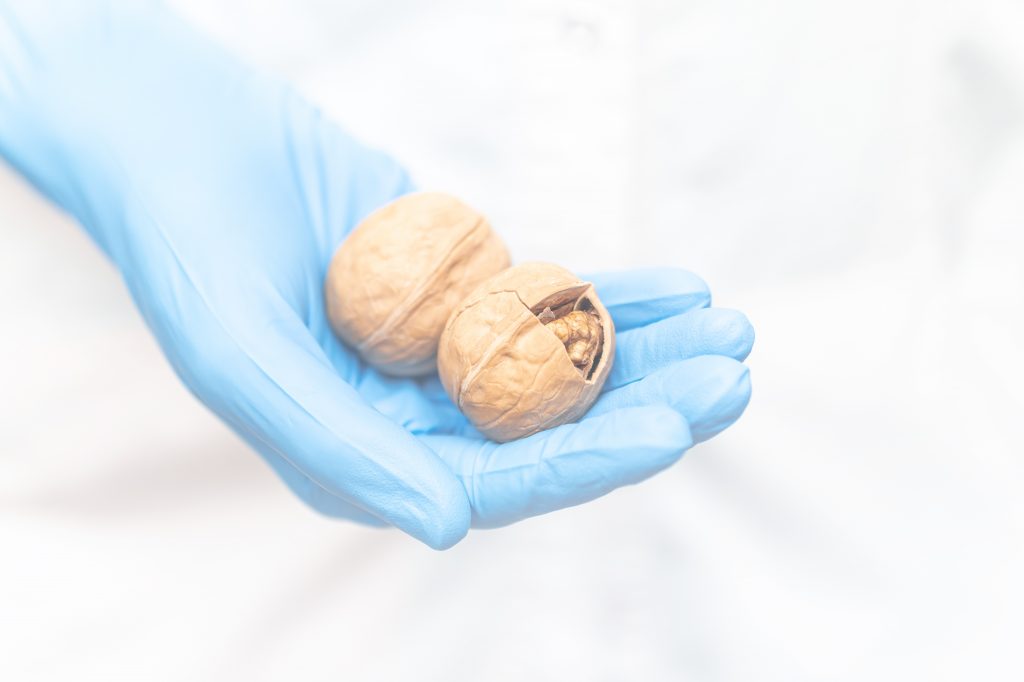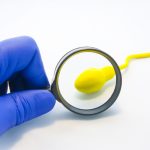Testicles (testes) are located inside the scrotum, a loose bag of skin underneath the penis. The testicles produce male sex hormones and sperm for reproduction. Testicular cancer is a disease that occurs when cancerous (malignant) cells develop in the tissues of a testicle and happens most often in men between the ages of 20 and 35. However, cancer of the testicles is rare.
Risk factors
Risk factors for developing testicular cancer include:
- Undescended testicle(s). It is when one or both testicles do not move down into the scrotum before birth.
- Race. White men are more likely to develop this cancer than men of other races.
- Personal and family history. Men with a brother or father who had testicular cancer have an increased risk of developing the condition themselves. Men who have had cancer themselves in one testicle are at increased risk of developing cancer in the other testicle.
- Infertility. Infertile men have a higher likelihood of developing testicular cancer. Some factors that result in infertility may also be related to testicular cancer, but there is no good understanding of the connection.
Symptoms
Signs and symptoms of testicular cancer include:
- A lump or enlargement in either testicle.
- A feeling of heaviness in the scrotum.
- A dull ache in the abdomen or groin.
- A sudden collection of fluid in the scrotum.
- Pain or discomfort in a testicle or the scrotum.
- Enlargement or tenderness of the breasts.
- Back pain.
Diagnosis of testicular cancer
Tests to help diagnose testicular cancer can include:
- Ultrasound. It is a procedure that uses high-energy sound waves to form pictures of body tissues and to scan for abnormalities in the testes.
- A physical exam and history. A physical exam and medical history can help the doctor look for problems related to testicular cancer.
- A serum tumour marker test. This procedure examines a blood sample to measure the amounts of certain substances linked to specific types of cancers. These substances are called tumour markers. The tumour markers indicating possible testicular cancer are alpha-fetoprotein (AFP), human chorionic gonadotrophin (HCG or beta-HCG), and lactate dehydrogenase (LDH).
- Inguinal orchiectomy and biopsy. This procedure involves the removal of the entire testicle through an incision in the groin. A tissue sample from the testicle is then checked for cancer cells.
- CT scan. A CT scan is a medical test that uses X-rays to form pictures of the inside of the body. In testicular cancer, a CT scan is performed of the abdomen and pelvis.
Treatment options
Testicular cancer is highly treatable, even when cancer has spread beyond the testicle. While a cancer diagnosis is always serious, the good news about testicular cancer is that it is treated successfully in 95% of cases. If treated early, the cure rate rises to 98%. Although a man’s risk of getting it is 1 in 263, his chance of dying from the disease is only about 1 in 5,000. Depending on the type and stage of testicular cancer, you may receive one of several treatments or a combination.
The three main kinds of treatment for testicular cancer are:
- Surgical treatment. This treatment can include removing the testicle and removing associated lymph nodes.
- Radiation therapy. This treatment uses high-dose X-rays to kill cancer cells. Radiation might be used after surgery for patients to prevent the tumours from returning.
- Chemotherapy. This treatment uses drugs to kill cancer cells.
When to see a doctor
See your doctor if you detect any pain, swelling, or lumps in your testicles or groin area, especially if these signs and symptoms last longer than two weeks.
Sources












